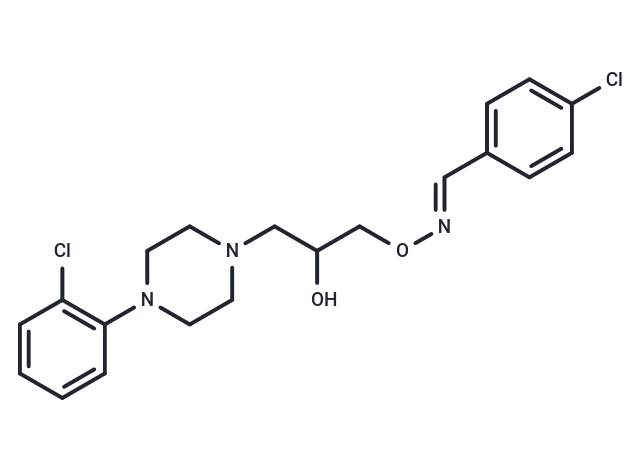 Your shopping cart is currently empty
Your shopping cart is currently empty

Peraclopone is a hypolidemic drug. It is an inhibitor of 7-Dehydrocholesterol reductase. Peraclopone potently inhibits the final step in cholesterol biosynthesis. Feeding this agent to rats leads to a rapid replacement of membrane cholesterol with its immediate precursor 7-dehydrocholesterol, and a dramatic reduction in plasma sterol concentration. Peraclopone caused a dose-dependent decrease in cholesterol and a concomitant accumulation of provitamin D3 (7-dehydrocholesterol) in the skin, which is accompanied by an increase in the plasma level of 25-hydroxyvitamin D3. Treatment with peraclopone dramatically alters membrane sterol content in many membranes including the microvillus membrane of both the jejunum and ileum. In the jejunal microvillus membrane a major change in chemical composition occurred, presumably in response to the alteration in membrane sterol. The net result was a significant decline in both the static and dynamic component of membrane fluidity.

| Pack Size | Price | USA Warehouse | Global Warehouse | Quantity |
|---|---|---|---|---|
| 25 mg | $1,520 | 6-8 weeks | 6-8 weeks | |
| 50 mg | $1,980 | 6-8 weeks | 6-8 weeks | |
| 100 mg | $2,500 | 6-8 weeks | 6-8 weeks |
| Description | Peraclopone is a hypolidemic drug. It is an inhibitor of 7-Dehydrocholesterol reductase. Peraclopone potently inhibits the final step in cholesterol biosynthesis. Feeding this agent to rats leads to a rapid replacement of membrane cholesterol with its immediate precursor 7-dehydrocholesterol, and a dramatic reduction in plasma sterol concentration. Peraclopone caused a dose-dependent decrease in cholesterol and a concomitant accumulation of provitamin D3 (7-dehydrocholesterol) in the skin, which is accompanied by an increase in the plasma level of 25-hydroxyvitamin D3. Treatment with peraclopone dramatically alters membrane sterol content in many membranes including the microvillus membrane of both the jejunum and ileum. In the jejunal microvillus membrane a major change in chemical composition occurred, presumably in response to the alteration in membrane sterol. The net result was a significant decline in both the static and dynamic component of membrane fluidity. |
| Molecular Weight | 408.32 |
| Formula | C20H23Cl2N3O2 |
| Cas No. | 96164-19-1 |
| Storage | Powder: -20°C for 3 years | In solvent: -80°C for 1 year | Shipping with blue ice/Shipping at ambient temperature. |
| Size | Quantity | Unit Price | Amount | Operation |
|---|

Copyright © 2015-2025 TargetMol Chemicals Inc. All Rights Reserved.